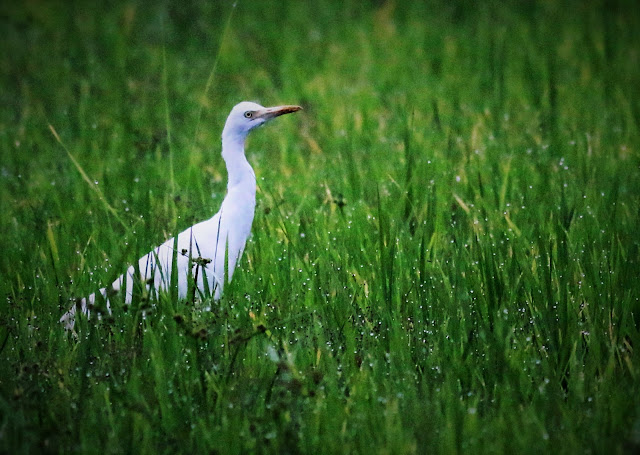When you are out there watching birds, you will probably meet two types of people, namely the bird photographers and the birders. How do you differentiate them? Just listen to their conversation:
 |
| Wood Sandpiper |
A Friend and A Bird Photographer
Friend: "Wow ! nice. what bird is this?
Bird photographer: TQ. Dunno but i think it is rare. Probably from Alaska or Mongolia. I have waited two hours for this bird.
Friend: I think it is a common sandpiper or maybe a green sandpiper.
Bird photographer: Dunno ! but it looks the same lah.
Friend: You use 1 stop exposure compensation?
Bird photographer: No. i actually used +3 stops, iso speed: 4000, exposure time: 1/640 sec, f/stop: 5.6, metering: spot and auto white balance. You must put one of your hands on the lens you know. So that your camera can be more stable.
Friend: same place ah?
Bird photographer: Yeah ! near the small lake area. Don't tell Ah Seng ah !
Friend: OK, OK !
 |
| Tringa glareola |
A Friend and A Birder
Friend: Wow ! what bird is this?
Birder: aah ! its just a wood sandpiper. Very common winter visitor. Can be found almost everywhere, paddy fields, river banks, wetlands but rarely on mudflats.
Friend: It looks like a common sandpiper.
Birder: No. Common sandpiper do not have speckles or a prominent white supercilium as a wood sandpiper. Both birds bob their tail but common sandpiper does it more. Common sandpiper has a distinctive gap between its carpal area and breast patch. It also has dull greenish legs as compared to more yellowish of a wood sandpiper. Their legs are also longer than a common sandpiper. In flight, wood sandpiper shows fine black barrings at its outer tail while a common sandpiper does not show any.
Despite the differences, the gap between a birder and a bird photographer is narrowing by the day. Nowadays most bird photographers has shown deep interest in the birds' welfare besides just taking their photos.
Recently i have a rare opportunity to watch a wood sandpiper and a common sandpiper side-by-side.
 |
| Common Sandpiper |
 |
| Common Sandpiper |
This is how they look in flight.
 |
| Wood Sandpiper in Flight (above) |
 |
| Common Sandpiper in Flight |
Here are both of them side-by-side
Common Sandpiper (left) and Wood Sandpiper (front)
Here are the other birds which were seen together with the sandpipers.
 |
| Common Moorhen |
This was the first time that i was able to get it on photo.
 |
| White-Breasted Waterhen |
"Hey guys, this fella here looks very strange" !
A group of Jungle Myna having a look at an odd looking friend of theirs.
Here is the close-up look of their mutant friend
A large flock of Asian Glossy Starling. In flight they can form amazing murmurations.
Happy Birding !
Note: It is encouraging to see that many bird photographers have taken the initiative to identify and learn more about the birds they shoot. Organisers of photography competitions should also encourage photographers to identify and put a name on their subjects especially those which depicts wildlife.
"Wisdom begins with putting the right name on a thing"
(old Chinese proverb) - IOC World Bird List
Happy Birding !













































